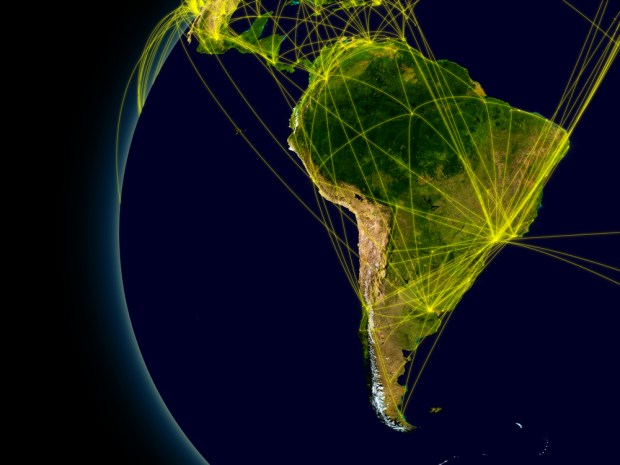Latin America Enjoys A Boost In Its Digital Prospects

What will it take to make Latin America more digital — in payments, commerce, FinTech or even healthcare? That longstanding question gained some fresh attention in recent weeks when Visa announced its investment in YellowPepper. According to Visa, the move will help support growing opportunities for tokenized payments, increasing access to Visa application programming interfaces (APIs) and expanding the usage of push payments via Visa Direct.
Cash remains king in the region, with about two-thirds of consumers in Latin America preferring that payment method over credit, according to estimates. That’s a high hurdle for any company hoping to win profit via digital channels in Latin America.
However, there are also fresh signs and analyses that put an optimistic spin on the prospects for digital in Latin America — markers that could encourage more investment in the region, home to more than 630 million people and globally significant economies, such as those in Brazil and Mexico.
Positive signs are coming from homegrown players in the Latin American economy. For instance, PagSeguro — a Brazil-based provider of digital payment services— reported a 107 percent year-over-year revenue increase this week for the first quarter of 2018, beating analyst expectations and the impact of a labor strike. Revenue hit about $250.5 million in Q1. PagSeguro, which provides services and devices that enable “micro” merchants to accept debit and credit cards, launched its initial public offering (IPO) in January, raising approximately $2.3 billion.
Latin America still doesn’t have its own version of Silicon Valley, but the region is making progress in digital, said Felipe Monteiro, a senior fellow at the Mack Institute for Innovation Management at Wharton, the University of Pennsylvania’s business school. In a recent interview, published by Knowledge@Wharton, he said there are about 40 companies operating in the same rough spaces as PagSeguro with annual revenue of at least $250 million.
As far as innovation goes, “FinTech is the most developed,” Monteiro said. “One important piece of data is knowing that about half of the Latin American population isn’t banked. If you think about all of the solutions that we can have – such as mobile payments with a cell phone from purely digital banks — we believe that FinTech is really one area where you are going to see a lot of advances, and potentially some leapfrogging solutions.”
He used M-Pesa — the mobile phone and payments service in Africa, Asia and parts of Europe — as a rough example of how digital can develop in a largely cash-based society. Latin America’s mobile penetration rate stands at about 70 percent, he said, and that could provide fuel for digital innovators, depending on the problems they set out to solve.
“If you look at the data, you see the penetration of mobile phones in Latin America is similar to what we knew in the case of M-Pesa,” he said. “So that whole region skipped the fixed line, and most people adapted directly the mobile phone. There [are a lot of people] with a mobile phone in their hands being prepared to do transactions, and this is going to have huge implications.”
Looking at the data, penetration of mobile phones in Latin America is similar to the case of M-Pesa. So that whole region skipped the fixed line, and most people adapted directly the mobile phone.
FinTech and payments aren’t the only sectors that could help guide Latin America into a more digital future. Healthcare seems likely to play a role.
“If … you know how precarious the health system is in a number of countries in Latin America, you can start to see the potential for initiatives like telemedicine,” Monteiro said. “There is a company in Chile called AccuHealth that has been providing remote patient monitoring, and it is spending a lot of money for helping governments and municipalities to provide medical services, many times remotely.”
Continue to dream, but significant challenges remain, as was made clear recently by José Manuel González-Páramo, head of global economics, regulation and public affairs at BBVA.
“Regulators in Latin America right now have a great opportunity to provide access to the best digital services in a potential market of over 600 million people,” he said at a recent conference. “The scale of the task and the need to develop a consistent and efficient regulatory environment are the challenges that lie ahead.”
Specifically, he called out the need for Latin American regulators to create “efficient and secure digital identity systems,” to guarantee “data protection and the rules of access to data” — and create what are commonly called “regulatory sandboxes,” which allow FinTech entrepreneurs to innovate while being free of some burdensome regulations.
